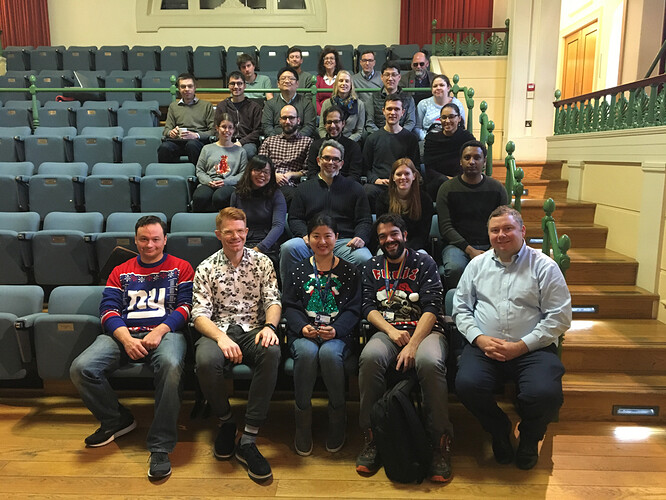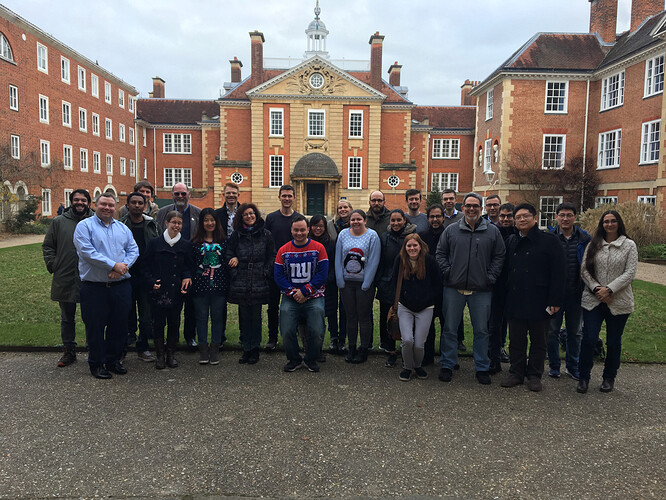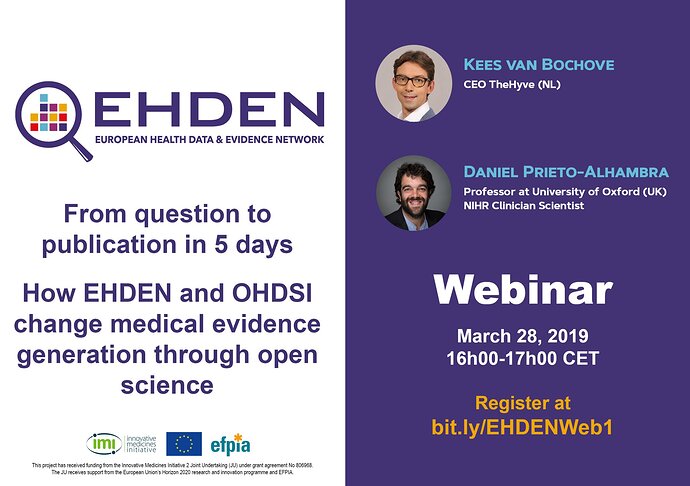Team:
This week @Daniel_Prieto is hosting 40 friends at University of Oxford for a OHDSI study-a-thon. As we did at the OHDSI F2F in NYC earlier this year, the group proposed research ideas, voted on a favorite, and yesterday, we got started on taking a clinically important question and turning it into reliable evidence that can improve patients lives by informing medical decision-making.
The topic area selected is knee arthroplasty. We are conducting two sets of analyses:
The patient level prediction question is: Amongst patients with total or unicompartmental knee arthroplasty, which patients will go on to have adverse post-surgical outcomes (including post-operative infection, venous thromboembolism, surgical revision, hospital re-admission, or mortality)? We will be using multiple time-at-risk windows, including 30d, 90d, 1yr, and 5yr.
The population-level effect estimation question seeks to compare the risk of adverse post-surgical outcomes (including post-operative infection, venous thromboembolism, surgical revision, hospital re-admission, or mortality) between patients with total knee replacement and patients with unicompartmental knee replacement .
We will be conducting this study on as many databases as feasible, we know we’ll be at a minimum using UK EHRs, US claims and US EHR data, but we welcome participation from the rest of the OHDSI community to virtually participate alongside us. Our target is to have completed draft manuscripts prepared by end of week, so we can obtain appropriate approvals from our respective organizations then submit to Lancet.
Each day, we’ll post our progress, including cohort definitions, prediction design specifications, and estimation design specifications on the OHDSI ATLAS instance, and we’ll put the R study package up on GitHub for those to run.
For now, here’s the links to our draft exposure cohorts, which will be revised throughout the day:
Target: Patients with total knee replacement: http://www.ohdsi.org/web/atlas/#/cohortdefinition/1769719
Comparator: Patients with unicompartmental knee replacement:
http://www.ohdsi.org/web/atlas/#/cohortdefinition/1769720
If you are interested in participating, would you mind running these cohorts to evaluate the feasibility?
Thanks in advance for your collaboration.


